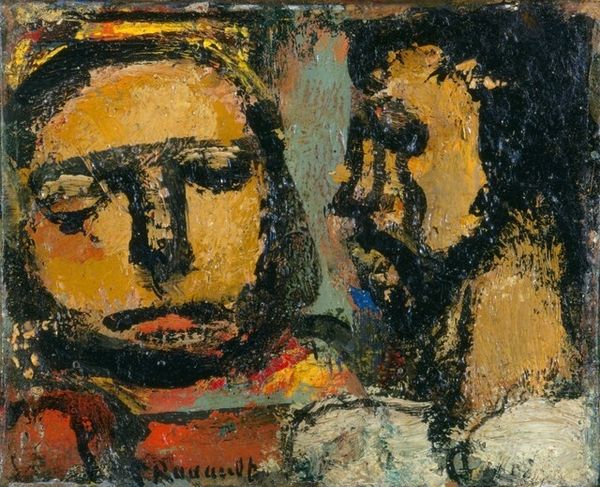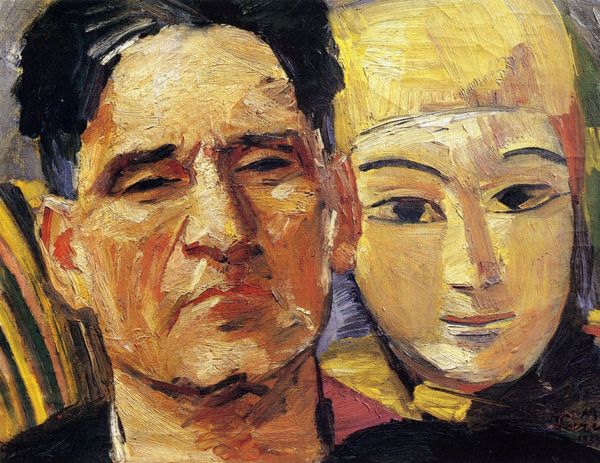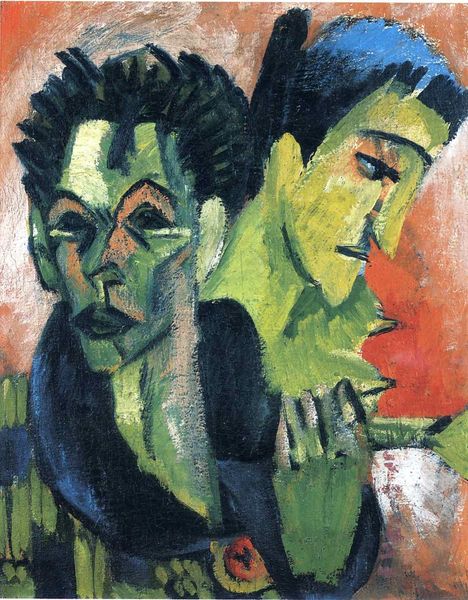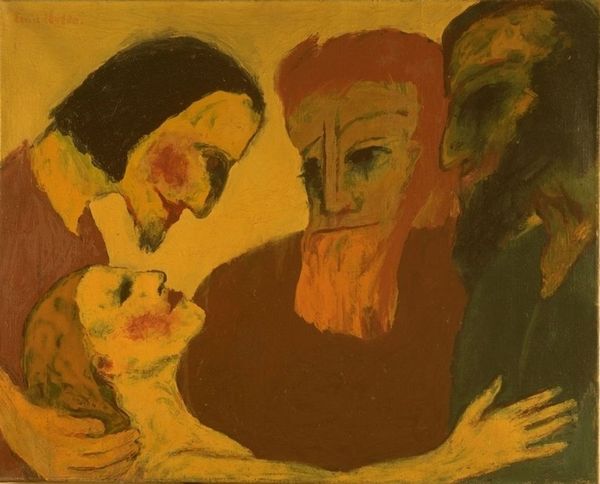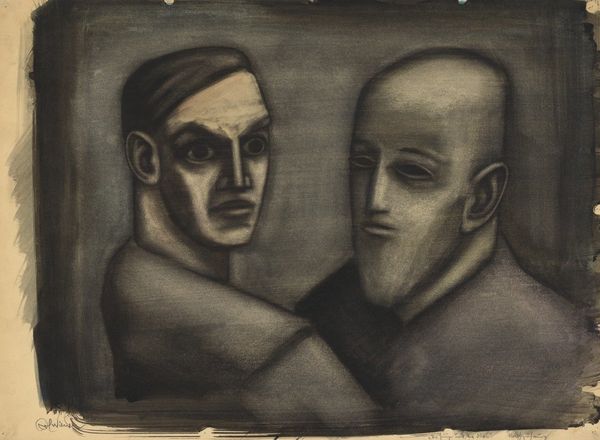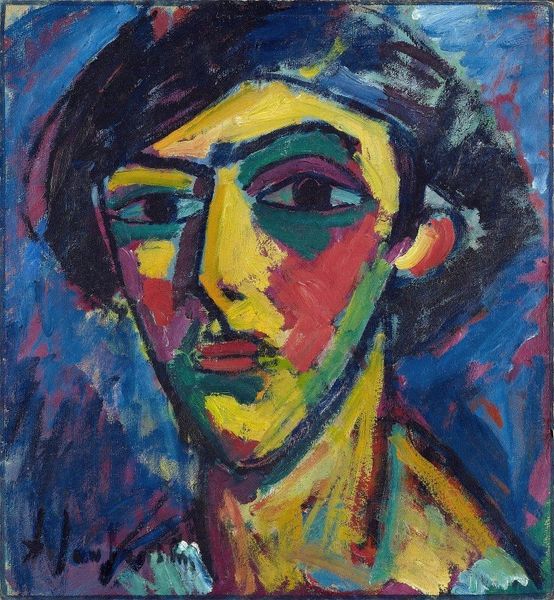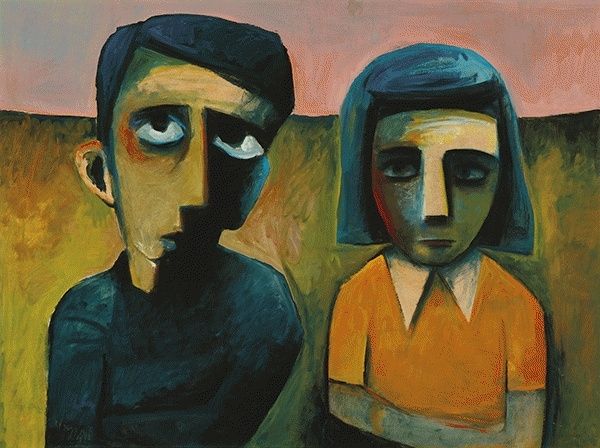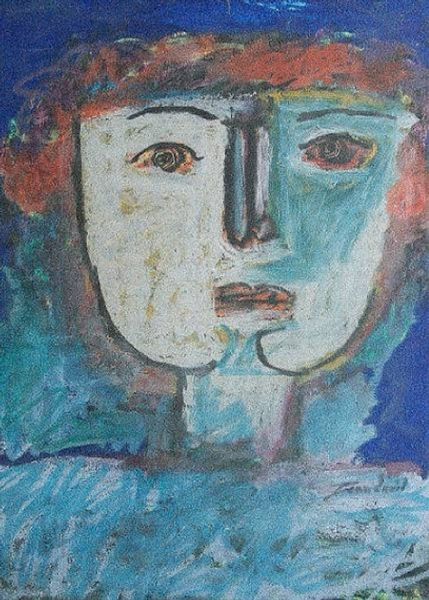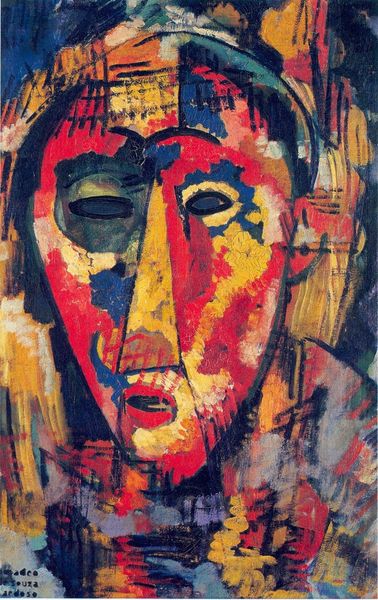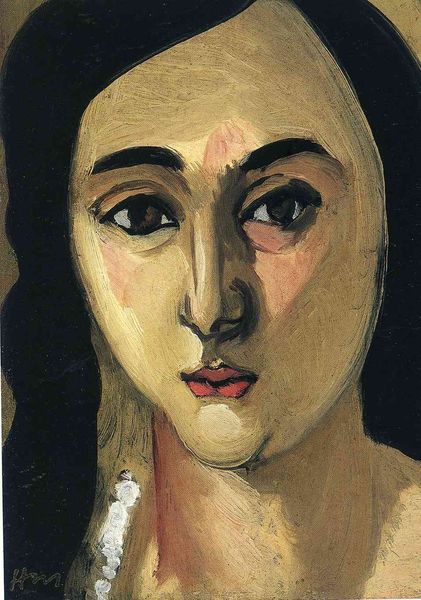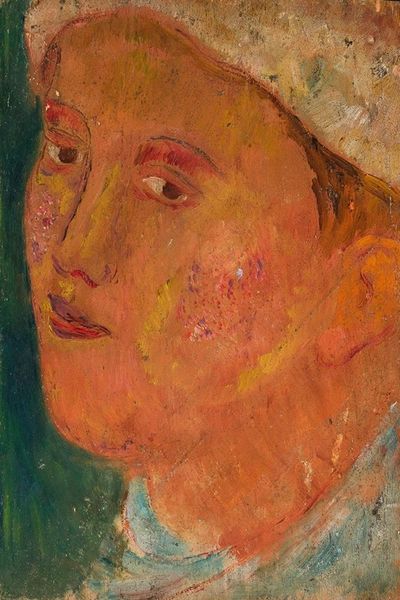
Dimensions: 21.7 x 36.2 cm
Copyright: Public domain
Curator: Arshile Gorky's "Portrait of Myself and My Imaginary Wife," painted in 1934 using oil paint, offers us a glimpse into the artist's internal world. Editor: There’s such a haunting quality to it. The somber hues, the figures gazing in different directions... it feels like a study in disconnection despite the intimacy of the portrait. Curator: Well, Gorky’s choice to represent himself alongside an “imaginary wife” immediately raises questions about identity, desire, and representation. His life and heritage as an Armenian immigrant shaped his artistic vision. I find it revealing that the very notion of creating his partner in paint provides an insight into the gender expectations of his time, a period in history not accepting of any sexual identity outside of the normative constraints. Editor: That’s insightful. I'm also considering the role of Surrealism here. Gorky flirts with the style, pushing the boundaries of recognizable forms. The figures aren’t rendered realistically. The palette is muted; his manipulation of oil creates a hazy effect. I mean, this wasn't painted at random, was it? Curator: Indeed. This falls within a time where Gorky was studying different forms, adopting influences and experimenting with different techniques to fit in the socio-political reality. He wasn't concerned about portraying literal reality, as we can also see that the portraits of “real people” often carried distortions. We should see how institutions shaped artistic expressions back then and how it informed his technique as well. Editor: It’s as if he’s suggesting that the imagined is just as valid, perhaps even more profound than the real. The imaginary becomes a space for self-definition and challenge the social constraints. It makes the figures compelling and unnerving simultaneously. Curator: This tension between the real and the imagined, between connection and disconnection, encapsulates the power of art to reflect our complex selves and sociopolitical history. Editor: Right. I’m leaving with a renewed appreciation for how personal and historical narratives can intertwine on canvas.
Comments
No comments
Be the first to comment and join the conversation on the ultimate creative platform.

